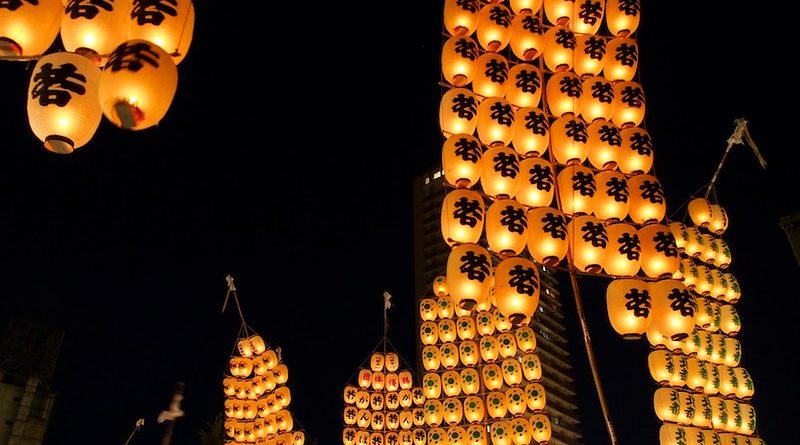The Kanto Festival
Most guide books will tell you to steer clear of Japan in the summer months because of the intense heat and crippling humidity; it’s not bad advice but you’ll miss out on some of the best festivals Japan has to offer – with their roots based in ancient folklore, these colorful spectacles are still very much part of contemporary society.
The Kanto Matsuri in Akita City, in the northeast of Honshu (mainland Japan), is one of the country’s biggest summer festivals. It has been designated an Important Intangible Folk Cultural Property.
In the summertime the many festivals around the country have a common theme: a bountiful harvest and protecting the spirits of ancestors as they return home. Legend has it the Kanto festival, held in Akita, is supposed to banish the sandman who brings sleep during the long, hot days of the harvest season.
The Kanto Festival dates back to the middle of the eighteenth century. It originates from a combination of rites requesting good harvests and protection of physical health by ridding the body of impurities and evil spirits. In summerthe climate is very hot and it is difficult to work enough to make a decent living, so it was much easier just to take a nap. However, people were afraid of catching sleeping sickness during this time of year. To eliminate drowsiness, the Kanto festival was started.
Held annually from August 5th to 7th, it has become the symbol of Akita, a leading rice-growing area. During the festival, 1.3 million people throng the city streets.
Today’s kanto are made of many candle-lit lanterns mounted on a bamboo frame to represent ears of rice. Kanto can weigh up to 50 kg (110 lbs.), rise twelve meters (13.2 yd.) into the air and suspend 46 lanterns. With more than 200 kantos, the number of individual lanterns is around 10,000. Supporting these lights are 3,000 people, including performers who demonstrate their skills at balancing the kanto on their palms, foreheads, shoulders, and hips.
The musical instruments used in the Kanto Festival are the traditional Japanese drum, flute, and bell. Two types of music are played: one is for marching and the other is for the kanto performance itself.
The kanto performance depends very much on the weather. If there is no wind at all, the kanto can feel very heavy to the performer. A strong wind can cause the kanto to fall down, to the amusement of the spectators. When a kanto falls down, the air flow from the bottom of the lantern usually blows out the candle so lantern fires seldom occur.




